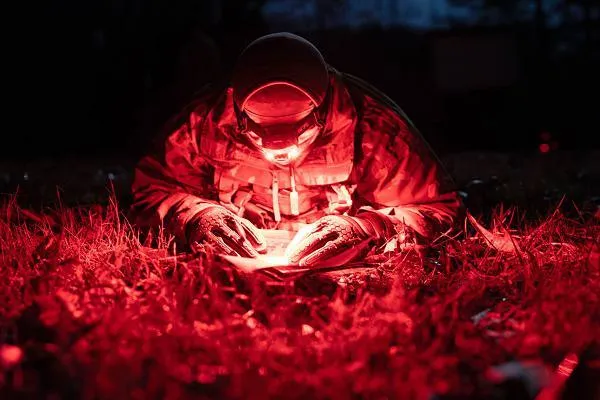
Why We Don’t Use White Light During Our Evening Sessions
🌙 Why We Don’t Use White Light During Our Evening Sessions
As the darker months roll in, our evening sessions at Manchester Outdoor Fitness continue in true MOF fashion — rain, shine, or pitch-black night! 💪
But if you’ve ever wondered why we ask members not to use white head torches, there’s good reason behind it.
💡 White Light Destroys Night Vision
When you use a bright white light in low-light conditions, your pupils contract, and your natural night vision is lost for several minutes — not just for you, but for everyone around you.
This makes it harder for your eyes to adjust to the dark, increasing the risk of tripping or losing sight of the terrain.
At MOF, our sessions often involve running, moving between stations, or doing bodyweight exercises outdoors — so maintaining good visibility and awareness for everyone is key to safety.
👁 How Your Eyes Adjust in the Dark
Your eyes are incredible at adapting to changing light levels — a process called dark adaptation. When you move from a bright environment into darkness, your pupils widen to let in more light. Meanwhile, special cells in your eyes called rods (responsible for low-light vision) gradually become more sensitive.
This process can take anywhere from 10 to 30 minutes to fully kick in, allowing you to see much better in dim light. However, if someone suddenly shines a bright white light — like a head torch — it instantly reverses the process. Your pupils constrict, your rods are temporarily overloaded, and you lose your night vision. It can then take several minutes to readjust.
That’s one of the main reasons we avoid white light during dark sessions: it disrupts your eyes’ natural adaptation and affects everyone around you, not just the person using the light.

🪖 Why the Military Use Red Light
Our instructors come from military backgrounds, so this practice actually comes from the field. In the military, red light is used for tactical visibility and safety. Soldiers use red lamps in dark environments because it helps them:
🔺 Preserve night vision — allowing them to see surroundings without losing situational awareness.
🔺 Avoid detection — red light doesn’t travel as far or reflect as brightly as white light, keeping positions concealed.
🔺 Maintain team awareness — red beams are subtle enough to illuminate maps, equipment, or pathways without blinding others.
The same principle applies to our sessions — just swap the battlefield for the park! When everyone uses red light, the group can train together smoothly, stay aware of terrain, and move safely without breaking rhythm or focus.
Military Tip
When white light approaches (eg vehicle headlights whilst we are training in the park) Military personnel cover one eye to protect the eye's dark-adaptation, preserving its ability to see in low light while the other eye adapts.If a bright light is encountered, the covered eye remains dark-adapted and can be used immediately, whereas the exposed eye would need to re-adapt to the darkness, which can take up to 30 minutes.

☠️ Why Pirates Wore Eye Patches (It’s Not What You Think)
You’ve probably heard that pirates wore eye patches because they lost an eye in battle — but there’s another fascinating reason often cited by historians and vision experts.
Pirates frequently moved between bright sunlight on deck and dark, enclosed spaces below deck. By keeping one eye covered, they could instantly switch between light and dark environments without losing night vision.
When going below deck, they’d simply lift the patch from one eye to the other — revealing an eye that was already fully adjusted to the dark. This gave them a huge tactical advantage in dim conditions, similar to why the military and outdoor trainers prefer red light today: it preserves natural night vision while still offering visibility.
So while we might not be boarding ships at Manchester Outdoor Fitness, the same principle applies — whether you’re a pirate, a soldier, or one of our members training after sunset, maintaining your night vision keeps you safe and effective.

👀 White Light Can Be Distracting (and Dangerous)
A bright white torch can completely disrupt the flow of an evening session. When one person uses it, everyone’s eyes need to readjust, breaking focus and rhythm. It can also reflect off wet surfaces, temporarily blinding others nearby.
Red or dimmed light helps keep everyone safe, comfortable, and focused on their training.

🤝 Teamwork, Awareness, and Respect for the Group
At Manchester Outdoor Fitness, training in the dark isn’t just about physical endurance — it’s about situational awareness, teamwork, and trust. When everyone uses red light, red light arm bands instead of white, the whole group benefits: visibility stays balanced, no one is dazzled mid-session, and everyone moves safely together.
It’s a small adjustment that makes a huge difference. Whether you’re running trails, crawling through mud, or grinding through burpees on frosty grass, the goal is to see without blinding, train without distracting, and work as one team — just like in the military roots that inspired our approach.
So next time you strap on your head torch, remember:
You’re not just lighting your own path — you’re helping everyone around you train better, safer, and smarter. 🔴💪

